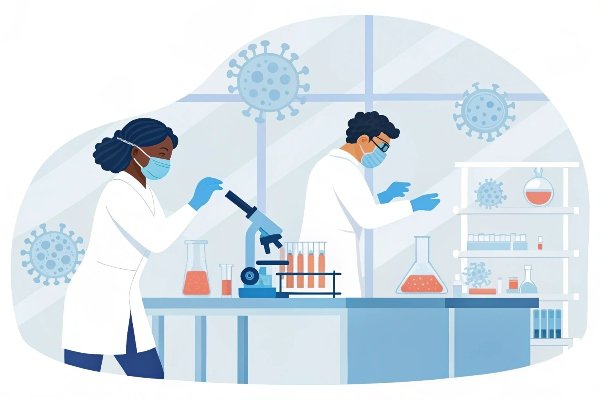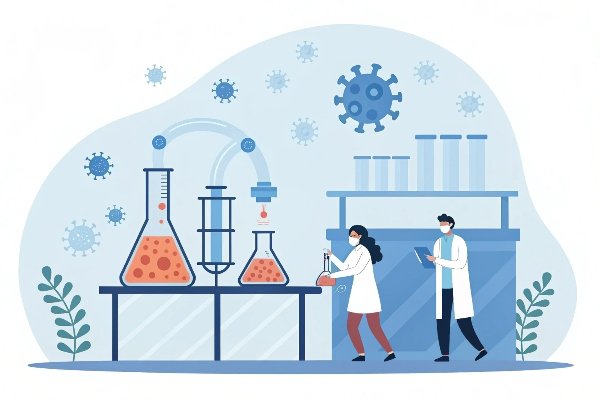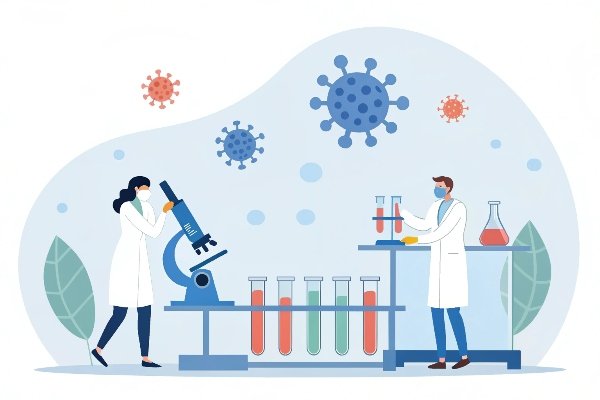Your products are getting moldy, smelling bad, or becoming a source of contamination. This microbial growth damages your brand and loses customer trust. We help you create materials that actively fight back.
Antimicrobial polymers1 are made by adding active agents that stop microbial growth. Their effectiveness is measured with standard tests, like ISO 221962. These tests count bacteria on a surface before and after a contact period. This proves the material can inhibit or kill microbes.

Understanding the basics is a good starting point. Here at Langyi, I've spent over 15 years helping clients figure out these details. I joined as the first employee when Dr. Tang started the company, and I've seen firsthand how important it is to get this right. The real success comes from understanding the details of testing, choosing the right materials, and knowing why this matters for your business. Let's go deeper into each of these areas so you can feel confident in your product.
How Can Antimicrobial Effectiveness Be Measured?
You are not sure if your product is really antimicrobial. This uncertainty can stop you from entering the market. Standardized testing gives you clear proof of performance and confidence in your product claims.
Effectiveness is measured by putting specific bacteria, like E. coli3, on both a treated and an untreated polymer surface. After 24 hours in a warm, humid environment, the surviving bacteria are counted. The difference shows the antimicrobial activity, usually as a log or percentage reduction.

When customers ask me about testing, the first thing I tell them is that while it sounds complex, the basic idea is very simple. We are just comparing a "before" and "after" picture of bacteria on a surface. From my experience working with clients all over the world, the main challenge isn't the science; it's knowing which test method is right for your market. My insight for you is that most of the testing standards are very similar in what they do, but different markets require different certifications.
The Core Principle of Testing
The process almost always involves these steps. First, you prepare two identical samples of your material. One is your final product with our antimicrobial additive, and the other is a control sample without it. We then place a controlled amount of a specific bacteria culture, like Staphylococcus aureus4 or Escherichia coli, onto both surfaces. The samples are then incubated, usually for 24 hours at a body-like temperature, to give the bacteria time to grow on the control sample. After incubation, we wash the bacteria off both surfaces and count how many are left. A high microbial count on the control and a very low count on your treated product proves the additive is working effectively.
Navigating Global Standards
A client in Germany will need results from an ISO standard, while a customer in Japan will ask for a JIS standard. The good news is that the core procedure is often nearly identical. I remember helping a client who wanted to sell their polymer storage boxes in both the EU and Japan. They were worried they needed two completely different product formulations. I showed them that our single antimicrobial additive performed well under both testing standards. We just had to run the tests and get separate reports. This saved them a lot of time and money.
Here is a simple table to show what I mean:
| Standard | Full Name | Primary Region | Basic Method |
|---|---|---|---|
| ISO 221962 | Measurement of antibacterial activity on plastics and other non-porous surfaces | International (EU, USA) | Quantitative test, measures bacteria count after 24 hours. |
| JIS Z 28015 | Antibacterial products - Test for antibacterial activity and efficacy | Japan | Quantitative test, nearly identical to ISO 221962. |
| ASTM E21496 | Standard Test Method for Determining the Antimicrobial Activity of Antimicrobial Agents Under Dynamic Contact Conditions | USA | Dynamic test, material is shaken in a bacterial solution. |
As you can see, the main quantitative tests, ISO 221962 and JIS Z 28015, are almost the same. Choosing the right one is about meeting your target market's expectations.
What Are Examples of Antimicrobial Polymers?
You need to make your product antimicrobial but do not know where to begin. The number of options can feel confusing. Let's look at some common and effective examples to help you choose.
Examples include polymers with natural antimicrobial structures, like chitosan. More commonly, plastics like polypropylene (PP) or ABS are mixed with antimicrobial additives, such as silver or zinc ions. These additives give the final plastic parts their antimicrobial function.

When Langyi was founded by Dr. Tang, his passion as a material scientist from Qinghua University was focused on this very problem. How can we make everyday materials better and safer? The solution, we discovered, was not always to invent new polymers but to effectively enhance the ones we already use every day. There are two main paths you can take.
Inherently Antimicrobial Polymers
Some polymers are naturally antimicrobial because of their molecular structure. The most famous example is Chitosan7, which is derived from the shells of shrimp and other crustaceans. Chitosan7 has a positive charge, while bacterial cell membranes have a negative charge. This electrical attraction allows the polymer to disrupt the cell wall, killing the microbe. It’s a fascinating material, but for industrial applications, it often has limitations. It can be expensive, difficult to process with standard plastic machinery, and its natural color can be a problem for some products. While we admire the science, it is not always a practical solution for our clients.
Synthetic Polymers with Additives
This is the most common and versatile method, and it is the area where we at Langyi have built our expertise. Instead of using a special polymer, we take common, cost-effective polymers and give them antimicrobial abilities. We do this by creating a concentrated product called a masterbatch. This masterbatch contains powerful antimicrobial agents, like silver ions, zinc, or specialized organic compounds, embedded in a polymer carrier. Our clients can then easily mix this masterbatch with their regular polymer pellets during the manufacturing process, like injection molding or extrusion. This method is efficient, cost-effective, and gives the final product reliable, long-lasting protection.
Here are a few common combinations I see every day:
| Base Polymer | Common Additive Technology | Typical Application |
|---|---|---|
| Polypropylene (PP)8 | Silver-ion (inorganic) | Food containers, medical device casings, cutting boards |
| Polyethylene (PE) | Zinc-ion (inorganic) | Plastic films, toys, waste bins |
| ABS | Organic (e.g., Isothiazolinones) | Appliance housings, keyboards, phone cases |
| PVC | Zinc Pyrithione | Flooring, wall coverings, shower curtains |
This approach allows manufacturers to use the plastics they know and trust while adding a powerful functional benefit.
Why Is Antimicrobial Measurement So Important?
You have created an antimicrobial product, but can you prove it works? Without data, your marketing claims are just words. Measurement gives you the core proof needed for customer trust and legal compliance.
Measurement is vital for three key reasons. It confirms product performance for quality control. It backs up marketing claims to build consumer confidence. And it ensures you meet regulatory standards in your target markets, which allows you to sell your product legally.
Over my 15 years with Langyi, I have seen clients succeed or fail based on this one thing: proof. Having a great product is not enough. You must be able to prove how great it is with reliable data. Measurement is not just a final detail to check off a list. It is a central part of your product's story and its strength in the market. It builds value from the factory floor all the way to the end user.
Quality Control9 and Consistency
First, measurement is about your promise to your own customers. Here at Langyi, we don't just sell an additive; we sell a consistent result. Before any bag of our antimicrobial masterbatch leaves our facility, we perform internal testing. This ensures that every batch has the same high level of antimicrobial activity. It means that when you use our product, you can be confident that your final plastic part will perform as expected, time after time. This internal quality control is the foundation of our mission to be a "hidden champion" in this industry. It’s a promise of reliability.
Building Brand Trust
Think about the end user. They see a label on your product that says "antimicrobial." How do they know it is true? This is where measurement becomes a powerful marketing tool. I worked with a client who manufactured public seating. After they started including "Independently tested for antimicrobial activity according to ISO 221962" on their product literature, with a QR code linking to the test report, their sales conversations changed. Their customers, who were city governments and airports, felt more secure in their purchase. The test report turned a simple claim into a documented fact, and this built incredible trust and set them apart from their competition.
Meeting Regulatory Hurdles
Finally, and perhaps most importantly, measurement is often a legal requirement. You cannot simply claim your product "kills 99.9% of germs" without data to back it up. Regulatory bodies like the EPA in the United States and the BPR in Europe have very strict rules about health-related claims. Making an unsubstantiated claim can lead to large fines and your product being removed from the market. Proper testing according to accepted standards provides the official documentation you need to make compliant claims. It is the key that unlocks market access and protects your business from serious legal and financial risk.
Conclusion
Developing effective antimicrobial polymers requires pairing the right agents with standardized testing. This essential step validates your product's quality, builds trust, and ensures market success.
Explore this link to understand the science behind antimicrobial polymers and their applications in various industries. ↩
Learn about ISO 22196, a key standard for measuring antimicrobial effectiveness, and its significance in product validation. ↩
Discover the role of E. coli in antimicrobial testing and why it's crucial for proving product claims. ↩
Find out why Staphylococcus aureus is a common test organism in antimicrobial studies and its implications for safety. ↩
Explore JIS Z 2801, a Japanese standard for antimicrobial testing, and see how it aligns with international standards. ↩
Learn about ASTM E2149, a dynamic test method for antimicrobial activity, and its applications in product development. ↩
Discover the unique properties of chitosan and its potential as a natural antimicrobial agent in various products. ↩
Explore the advantages of polypropylene as a base polymer for antimicrobial applications and its versatility. ↩
Discover the importance of quality control in ensuring consistent antimicrobial performance in products. ↩

-300x210.jpg)
